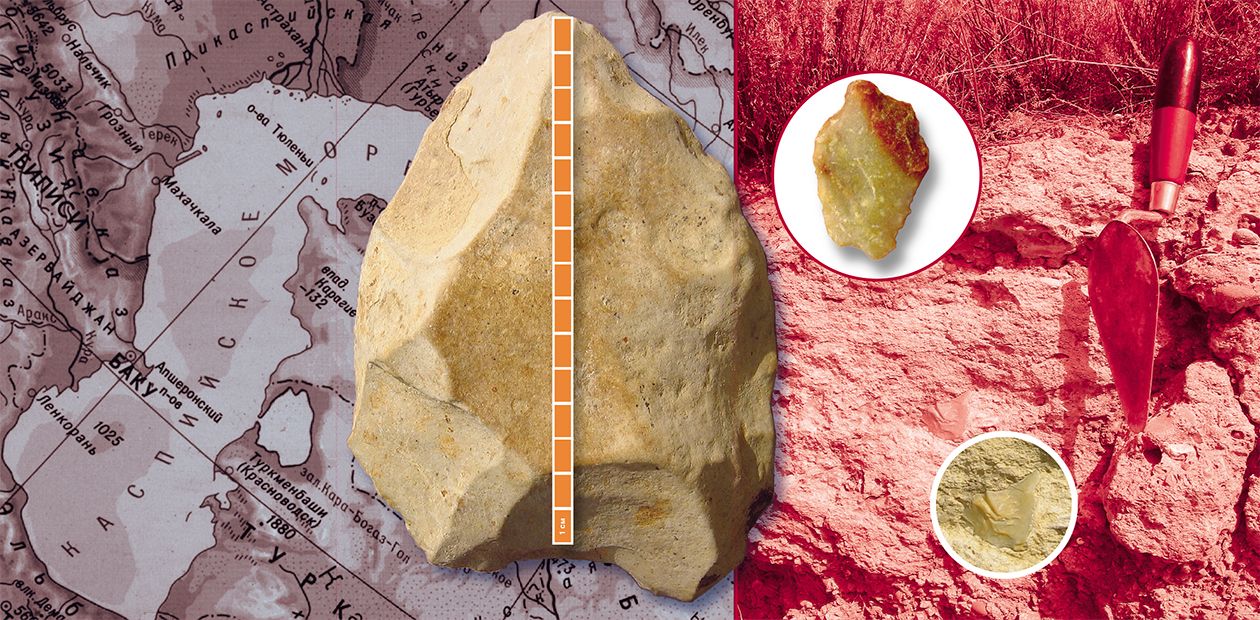"MINI" Artifacts: Archaeological Hot News from Dagestan
Surprisingly, the majority of people visualize a Stone Age man as a typical King-Kong with a cobble or with a heavy hammer stone in his hand. Probably it is because most of the earliest tools the prehistoric man used were heavy, roughly flaked stones. We can hardly imagine that prehistoric people (not yet ‘sapiens’) could have operated miniature well-made implements like the ones that have been discovered in the vicinity of the city of Derbent, in the valley of the Darvagchai River
The summer season of 2005 became surprisingly fruitful for Siberian archaeologists. One of the most unexpected discoveries of this year was made on the Caspian Sea coast, in hot Dagestan. It is not accidental that scholars investigated that distant area: archaeological research has been under way in that Caucasian Republic for three years already. The joint project is executed by the Novosibirsk Institute of Archaeology and Ethnography, Siberian Branch of the Russian Academy of Sciences, together with scholars from the Moscow Institute of Archaeology, the Institute of Ethnology and Anthropology and the Institute of Geography of the Russian Academy of Sciences. According to the hypothesis shared by the majority of archaeologists, humans started spreading from Africa about two million years ago. One of the two human migration waves pursued its way through the Near East, Iran and along the western coast of the Caspian Sea (a rather narrow coastline). Therefore it is only natural that the area was surveyed and a particular site was chosen for excavations.
Thus, after three months of archaeological research in the Darvagchai valley, flint tools from two to four cm long were recovered from breccia (cemented rock detritus). These small end and side scrapers, points, knives and other ‘instruments’ have shown wonderful, actually gold-work processing.
Judging by the exterior and by the working technique, these artifacts can be easily correlated with other tools attributable to the Upper Paleolithic (35,000—10,000 B C). However, due to the recovery of Caspian mollusk fossils out of the limestone detritus and conglomerates, the age of the microtools is now known to go back to the Lower Paleolithic, in other words to 600,000—800,000 years ago!
The archaeological discovery on the Darvagchai is unique, because the recovered microindustry is dramatically different from ‘macroindustry’, which is linked with the first global human migration wave out of Africa — the so-called Oldowan (pebble) culture with the most primitive large stone tools. Still more important is the fact that the discovery of microtools on the Darvagchai is the first discovery of such ancient tools on the territory of Russia. In general, several discoveries of such typologically similar microlithic cultures of the Lower Paleolithic, made on the vast areas of Eurasia, have been reported in the last five or ten years. These discoveries have provided the evidence on the early (2—1.5 million years ago) migration wave independent from and practically parallel to the Oldowan culture.
The discovery on the Darvagchai supports the hypothesis that there existed isolated populations of early humans in prehistoric Africa. These populations might have practiced different stone working technologies and utilization of tools. The discovery of the Dagestan microtool industry can be listed among other really great discoveries, which provide new insights into the issues of human origins and of the earliest stages of human dissemination over the planet.















